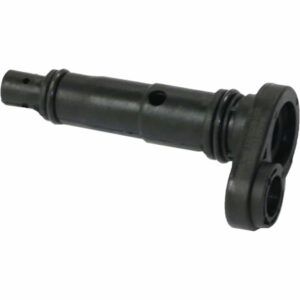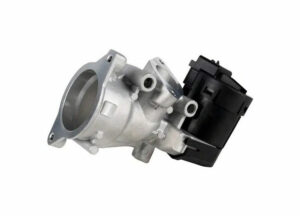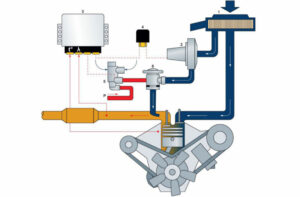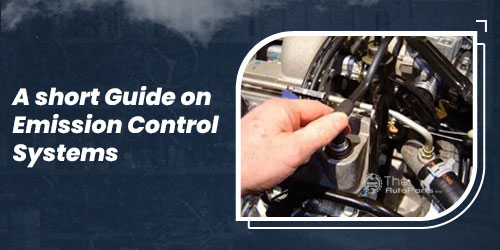Emission control was the prominent reason that computerized systems were increasingly used in automobiles. Our automobile systems produce several gases such as Hydrocarbons, Carbon Monoxide, and Oxides of nitrogen that are released into the atmosphere. A clean air act which was implemented in 1977 imposes a limit on the number of emissions to be emitted. These issues were mitigated with the help of pollution control devices and self-adjusting engines. In the year 1981 self-adjusting engines were incorporated into the vehicles. An oxygen sensor became an integral component of the exhaust system that measured the fuel content present in the exhaust stream. As the computerized systems evolved ignition spark timing and other systems became a part of the cars. Issues in the system are revealed by these computers accompanied by trouble codes that need the attention of the drivers. Finally, emission control systems EGR valve, catalytic converter, air pump, PCV valve, and charcoal canister played their part in eradicating unwanted and harmful gases from the system. This article highlights the ins and outs of ECS and the need for emission control replacement when these systems stop working completely.
Catalytic Converters: Powerful Emission Control Systems
- Automotive emissions can be tackled in three ways: One by performing complex combustion so that there are minimum by-products, second putting the Hydrocarbons released by the system back for the combustion process, and third is by creating space within the system so that oxidization or combustion process can take place. This separate area is known as Catalytic Converter or CAT.
- The appearance of the Catalytic converter is similar to Muffler and lies at the front of the muffler. Within the converter lies the honeycomb structure made of platinum or palladium which makes the combustion process faster.
- Hydrocarbons or carbon monoxide released by the exhaust move to the catalyst and the process of chemical oxidization is performed so as to bifurcate them into Carbon Dioxide and water.
- As the converter moves it produces heat and gets dirty after a while. A dirty exhaust performs excess effort and generates more heat. These efforts lead to the destruction of the converter and can be resolved via catalytic converter replacement after being declared dead by the mechanic.
- Fuel with lead adds a layer on metals present within the converter and halts its working completely.
PCV Valve

The primary purpose of Positive Crankcase Ventilation is to obtain the vapors produced by the crankcase during the regular combustion process and send them to the air/fuel intake system for burning during combustion. These vapors must be meticulously controlled and calibrated as not doing so will impact the engine’s performance.
At high speeds, the mixture gets less critical and pressure becomes more so more vapors enter the system. As the valve clogs the vapors move towards the air filter which further gets into seals resulting in an engine oil leak. This would devoid the car of engine oil and prevent it from working. During such issues, a though inspection followed by PCV replacement can bring your vehicle back on track.
EGR Valve

Exhaust Gas Regulation or EGR valve is responsible for sending a small amount of exhaust gas within the intake system. It is also responsible for diluting the air to fuel the mixture so as to reduce the combustion chamber temperature. High combustion chamber temperature forms Nitrogen oxides that are harmful to the environment. This is why the amount of exhaust that enters the intake system must be carefully monitored and regulated when it goes out of control. This action of EGR is prevented when the system gets cold or needs full power to operate. Issues with the EGR valve mustn’t be taken lightly and compare the EGR valve replacement cost before making the decision of buying a new valve when the old valve doesn’t work as expected.
Evaporative Control
Gasoline emits at a fast pace from the vehicle. Earlier these emissions were released into the environment but in 1970 legislation was passed in which no fumes are to be released into the atmosphere. Pollution was minimized with the help of emission control systems. The ECS system traps and holds emissions dissipated by the system. As the fuel mileage goes down Emission control systems are checked and efforts to resolve the issue are performed.
Air Injection

You would hardly come across any combustion engine that delivers 100% efficiency. The exhaust still has some unburned fuel. To get rid of this unburned fuel-air injection systems were introduced. Sometimes excessive fuel content gets within the system which is known as deacceleration. Thorough inspection accompanied by Air Injection replacement must be carried out to help them perform optimally.
The Bottom Line
Emission control systems help you get rid of harmful gases released by the system. Several components are amalgamated to build these systems that work together to remove these gases.
